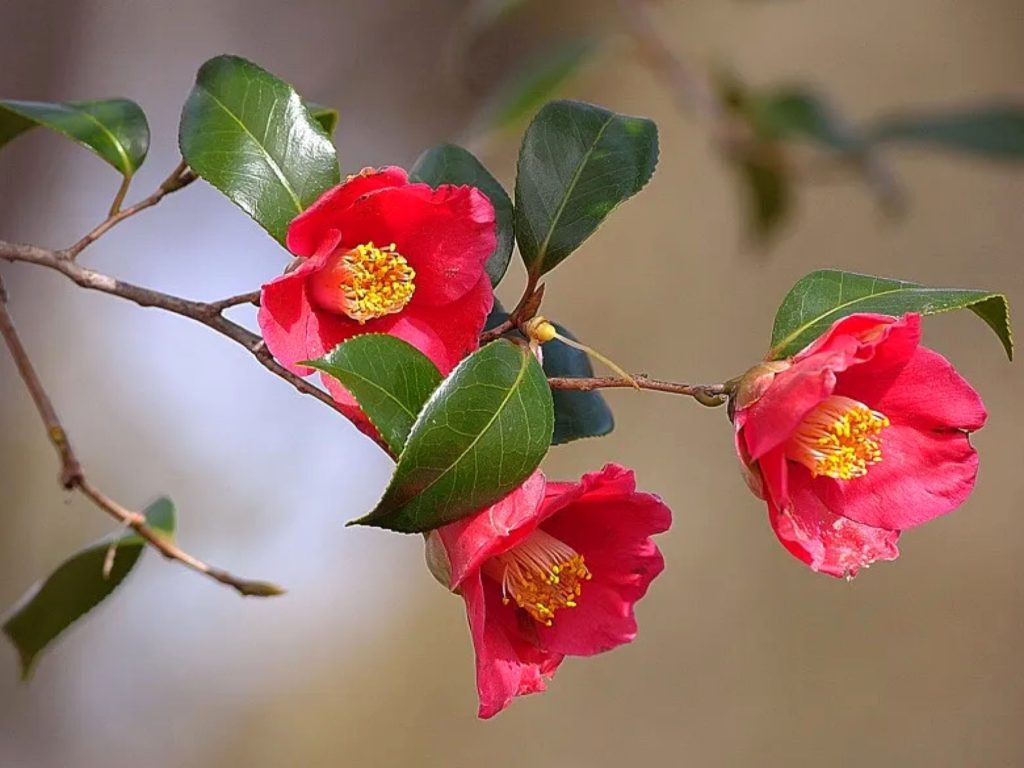
As Sen no Rikyu advocated, “Flowers are in the field,” flowers and tea ceremony are inseparable from each other. At the tea ceremony, the period from May to October is roughly divided into the summer “season of the wind furnace” and the period from November to April of the following year is the “season of the furnace” in the winter. By changing it, you can prepare a tea ceremony where you can enjoy the seasonal feeling. Chabana is the most straightforward expression of that seasonal feeling. We use seasonal flowers, but the “season of the wind furnace” is the main role of Mukuge, and the “season of the furnace” is the main role of the camellia. The camellia uses flowers that are fully open, while the camellia is used according to the season, such as buds, half-open, and full bloom. Each camellia that has been bred by camellia lovers has a name, and there are hundreds of them. The camellia in the tea room, which has been extremely simplified, colors the tea room with one red point and makes you feel the solemnity of life.
千利休が「花は野にあるように」と唱えたように、花と茶の湯は切っても切り離せない関係があります。茶の湯では、5月から10月までを夏季の「風炉の季節」、11月から翌年の4月までを冬季の「炉の季節」と大きく二つに分け、釜を据える場所や、扱う道具を変えて、折々の季節感が味わえる茶席をしつらえます。その季節感を最も端的に表すのが茶花です。季節折々の草花を利用しますが、「風炉の季節」は木槿(むくげ)、「炉の季節」は椿が主役です。木槿は開き切った花を使いますが、椿は、蕾、半開き、満開と季節を追って使い分けます。椿愛好家に寄って品種改良された椿にはそれぞれに呼び名があり、その数は数百に及びます。極端にまで簡素化された茶室の椿は、紅一点、茶室を彩り、命の厳粛さを感じせます。
